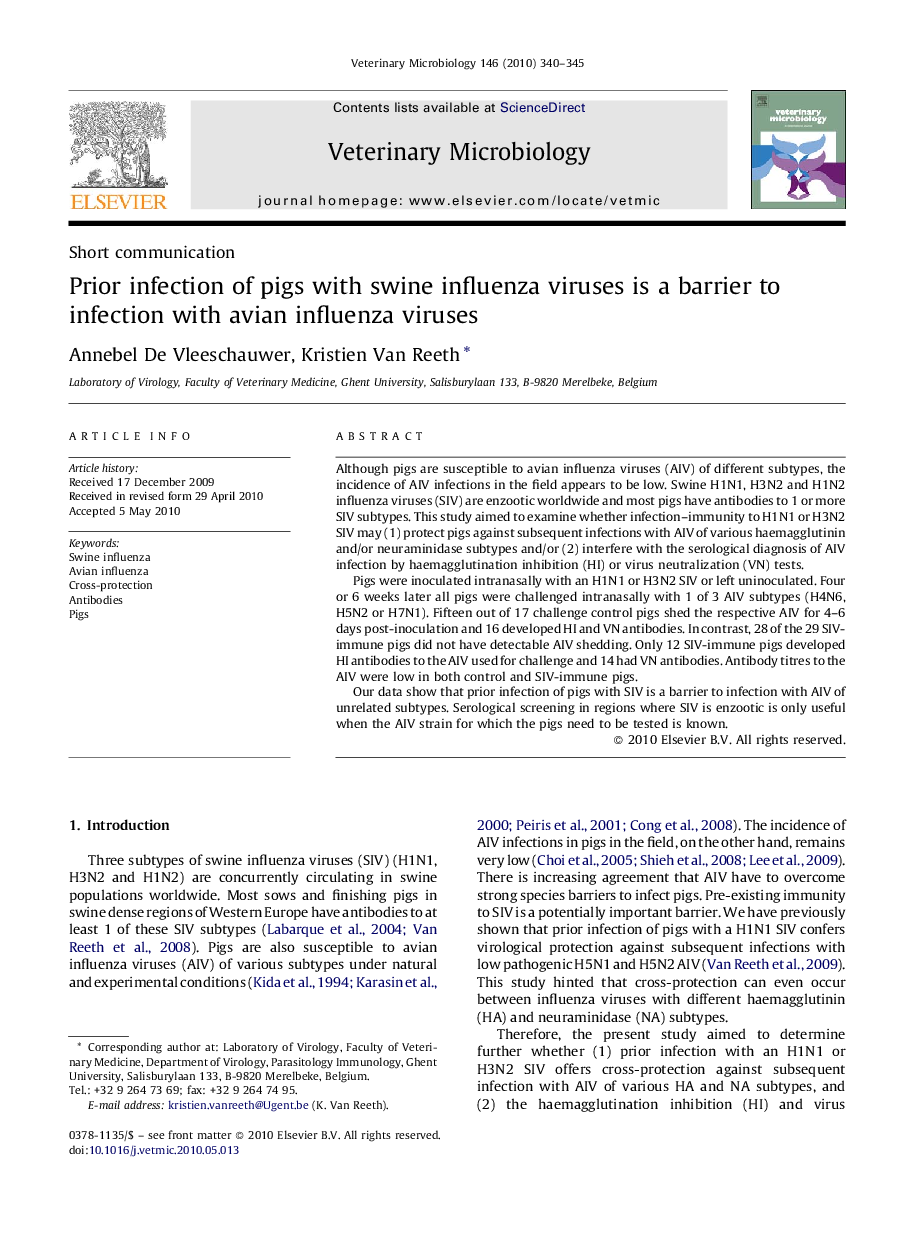| Article ID | Journal | Published Year | Pages | File Type |
|---|---|---|---|---|
| 2467963 | Veterinary Microbiology | 2010 | 6 Pages |
Although pigs are susceptible to avian influenza viruses (AIV) of different subtypes, the incidence of AIV infections in the field appears to be low. Swine H1N1, H3N2 and H1N2 influenza viruses (SIV) are enzootic worldwide and most pigs have antibodies to 1 or more SIV subtypes. This study aimed to examine whether infection–immunity to H1N1 or H3N2 SIV may (1) protect pigs against subsequent infections with AIV of various haemagglutinin and/or neuraminidase subtypes and/or (2) interfere with the serological diagnosis of AIV infection by haemagglutination inhibition (HI) or virus neutralization (VN) tests.Pigs were inoculated intranasally with an H1N1 or H3N2 SIV or left uninoculated. Four or 6 weeks later all pigs were challenged intranasally with 1 of 3 AIV subtypes (H4N6, H5N2 or H7N1). Fifteen out of 17 challenge control pigs shed the respective AIV for 4–6 days post-inoculation and 16 developed HI and VN antibodies. In contrast, 28 of the 29 SIV-immune pigs did not have detectable AIV shedding. Only 12 SIV-immune pigs developed HI antibodies to the AIV used for challenge and 14 had VN antibodies. Antibody titres to the AIV were low in both control and SIV-immune pigs.Our data show that prior infection of pigs with SIV is a barrier to infection with AIV of unrelated subtypes. Serological screening in regions where SIV is enzootic is only useful when the AIV strain for which the pigs need to be tested is known.
